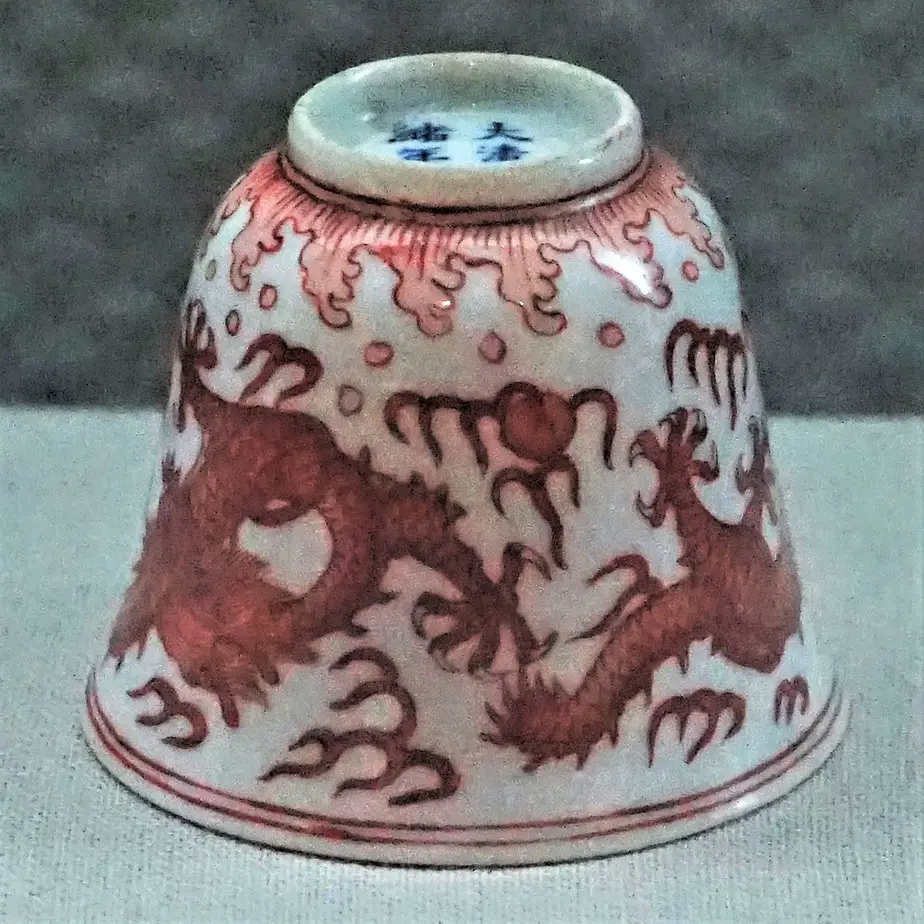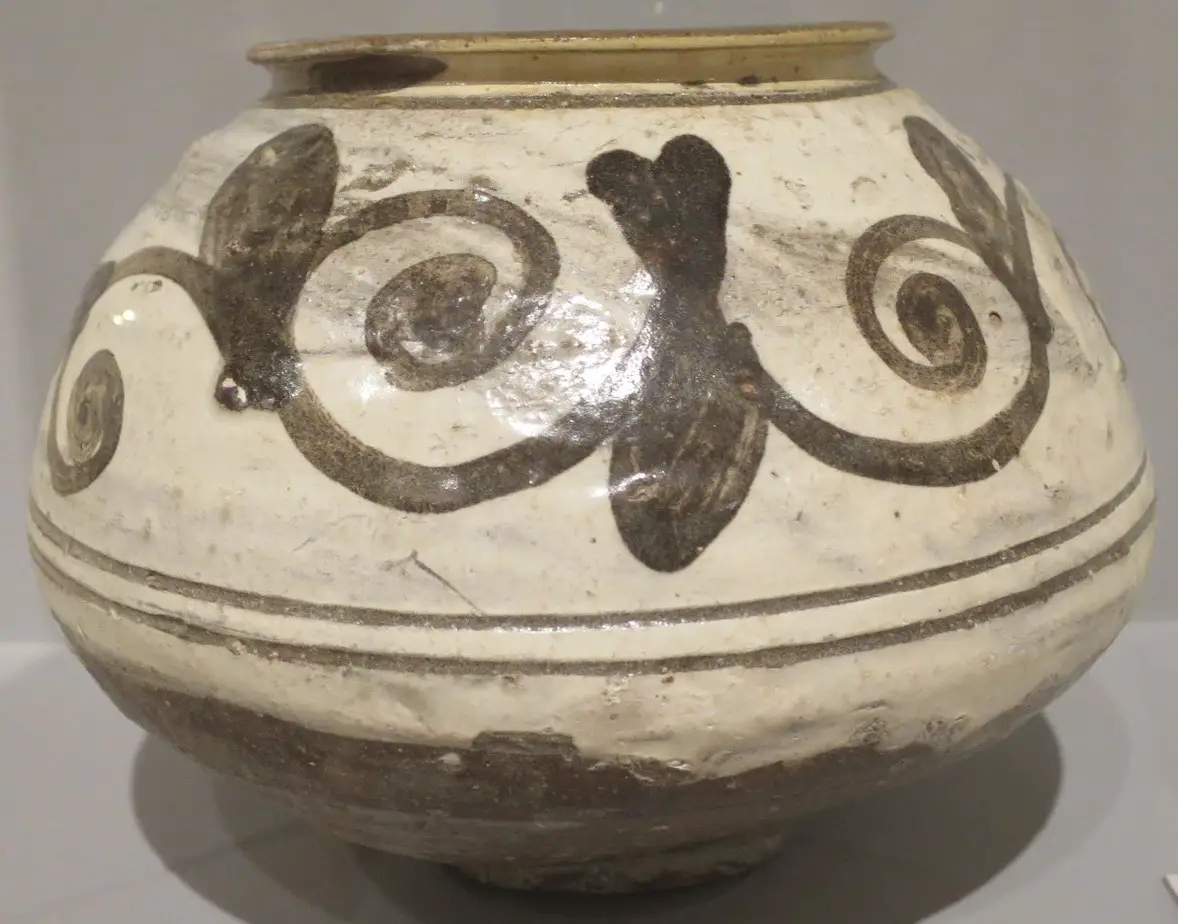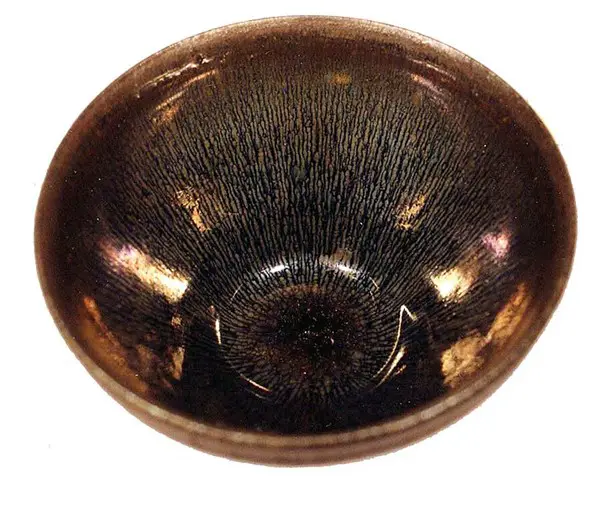There are no limitations to the pottery glazing recipes. Also, there is a multitude of recipes that are the blend of various oxides, minerals, and other substances that create multiple color pallets for glazing.
The red iron oxide or ferric oxide glaze is one of those prevalent glazes that act as a much more common colorant for the glazing mixture. With its easy availability, it offers a beautiful color to the glazing when fired inside the kiln. Moreover, the potters use iron oxide wholeheartedly because during pottery glazing, the iron changes quite quickly in reduction firing. At a high temperature, iron changes its personality and becomes a flux that is too active.
An oxide that is easy to flux offers a perfect color and firm adherence to the pottery, which allows the glaze to become well-finished. If you are thinking of working with iron oxide glaze for your next pottery project venture, then this article is especially for you. Here we are going to talk about everything that you need to know about the iron oxide glaze for your pottery. So, let’s have a look.
What is iron oxide glaze?
Synthetic iron oxide or red ferric oxide is used as one of the most common kinds of colorants in ceramics. It contains a higher amount of iron as one of the main components. Iron oxide is quite readily available as a soft and fine powder that is grounded from ore material. Moreover, the process also includes heat processing of the ferrous or ferric sulfate or ferric hydroxide to create the oxide.
The ions present in the mixture produce a similar type of color in the glaze and on the clay surface during firing. Iron oxide glazes are famous for being available in various shades and hues. It is available in both bright and light red to dark maroon shades.
The iron oxide glazes are typically designated on a scale of 120-180 to denote the color and shade through its numbering. The oxides in the ceramics need to be fired at a similar temperature, even if the grades are different. As they contain the same amount of iron, they need to be fired at the same temperature. The colors differ due to the degree of grinding.
How does iron oxide react while firing?
In oxidation, the fired ironwork is a very refractory component. The personality of iron oxide makes it quite impossible to create a metallic glaze even in highly melted conditions. Iron Oxide is a very efficient source for the color palettes like the red-brown maroon, tan, and brown colors in the glaze bodies.

The red color of the iron depends on the crystallization of iron in the matrix of a fluid glaze. Besides that, it requires a large amount of iron to be present in the glazing mixture to acquire the proper red shade. The terracotta red color comes from the iron, which makes the body a light scarlet shade.
Moreover, the color also depends on the porousness of the body. The more you fire the body at a higher temperature, the more acquire depth in the shade. The color changes from a deeper red to dark brown color due to firing.
The reduction in firing changes the personality of the iron, and it becomes very active as a flux. The iron glaze acts with stability at cone 6-8-10 in the oxidation process and usually runs off the ware due to the reduction method. The iron, due to the reduction process, can create lovely shades of the earthy brown color. Moreover, you can also achieve green, red, and grey, depending on the glaze chemistry and the amount of iron present in the mixture.
With a particular amount of impurities present in the iron, during the reduction of clay bodies, it can melt faster and acquire fluidic consistency during firing. Thereby, it creates specks that run through the glaze. That is how it makes a beautiful shade of glazing, which is popularly known as blossom on the glazing surface.
Characteristics of iron oxide:
Just like any other oxide, iron oxide, or ferric oxide for glazing comes with some specific characteristics that you need to know. Let’s have a look:
- The particles of iron oxide are tiny in shape. A particle of iron oxide can pass through the 325 mesh completely.
- The particles are quite strong and hard to break down, even if you use a powerful electric mixer; it is not going to get separated.
- The iron oxides come with magnetic properties in them. It has two unpaired electrons., which make the material magnetic or paramagnetic.
- The melting point for iron oxide is 1539 degrees Celsius or 2802 degrees Fahrenheit.
- The iron oxide decomposes at 105 degrees Celsius.
- It comes with a red-brown solid appearance with 5.25 g/cm3.
How many types of iron oxides are there?
Based on the type and color of the components, here are the 4-different types of iron oxides, which are used as the colorant for pottery glazing.
Let’s have a look at the different kinds of iron oxides available for pottery glazing:
| Type of iron oxide | Formula | Color |
| Ferric oxide hydrate | FeO(OH) | Yellow |
| Ferric oxide or Colcothar | FeO3 | Red |
| Ferric Ferrous Oxide | Fe3O4 | Black |
| Ferric oxide or Iron (III) | Fe2O3 | Red-brown |
Is iron oxide food safe?
Iron oxide has been in use for more than ages as it is quite a trendy kind of pottery glazing colorant. Using iron oxide is entirely safe for pottery, and also it is food safe as it is a very stable component.
Iron oxide does not undergo any chemical or physical reaction with heat, light, acid, moisture, oxygen, oil, or pH. That is why it is quite reliable to use on pottery for glazing or decoration, as you are not going to get harmed by any chemicals when you use it for food purposes.
What is the suggested ratio for mixing iron oxide with regular glaze?
To create a standard mixture along with the iron oxide and regular glaze mix, you need to take the red iron oxide and the borate mixture at a ratio of 50:50. Mix up the mixture to create a fair and thick consistency. And brush it up on the pottery surface and then wipe it off using a damp sponge. You can fire this mixture at the cone 4-6. The mixes do flux a lot when it is fired, so make sure you are not using it along with another pottery piece. Otherwise, you can keep it at the bottom of the rack to save the other pieces from staining.
Here is another recipe that you can also use to create a very brilliant red oxide effect. Here in this ratio, you need to create a mixture of some ingredients with a varied differences in the ratio.
Here is how you can do it.
| Ingredients | Percentage of the measurement |
| Blackbird slip | 27.4% |
| Rutile | 8.2 % |
| Red iron oxide | 37% |
| Alberta slip | 27% |
This recipe is going to be good with the cone range of 04-10. This mixture does not flux much, and you can easily apply it using a brush or through the dipping method.
How to decorate your pottery with iron oxide for glazing?
As we said earlier, iron oxide is a popular kind of colorant that you can easily use for decorating your pottery. Designing the porter with iron oxide is much easier if you know how to do it rightly. Here are the ways that you can use to decorate your pottery with iron oxide.

-
Add it with slips:
You can easily add oxides along with the slips to create a more attractive design. Make some slips for the coloring of your slip. After that, add some oxide to create the color that you want. Now mix the slip properly to get the perfect shade for your glaze. To get an even and uniform color, you need to mix the oxide quite well with the slip until the color blends entirely and creates an even texture of the mixture. On the contrary, if you want a blotchy color or a random shade, there is no need for mixing well.
-
Create a brush effect:
If you don’t want to make the processing complicated, you can easily apply the glazing using a brush. Just take some oxides and spread them evenly on the surface of the greenware or bisque pottery. Make sure that you are covering the whole area properly with even thickness. Once you are done with applying the oxide, fire it at a high temperature to get an effective color. If you want to get a red shade, then you need to fire it for a medium time amount. For a darker shade, you need to fire it more.
-
Use the oxide as an under-glaze:
You can also use iron oxide as an application for the under-glaze. Start with brushing the oxide properly on the top of the pottery surface to create a very evenly colored look. Then follow the process by applying the glaze to the oxide. In order to prevent your oxide from getting brushed off during the brushing of the glaze, it is better to skip this process. Try dipping into or spraying the glaze to keep the oxide intact on the pottery body. Try to avoid the contamination of the remaining glaze by dipping the oxide while keeping it aside. Make sure that you have opted for a strong application of the oxide to make it bleed well through the glaze.
-
Apply the oxide over the glaze:
You can also create a very intense look of your pottery by applying it over the unfired glaze. Create an evenly thick mixture to apply to the pottery. If you are done with applying the glaze mixture to your ceramic, wait for some time to let it become completely dry. Once the glaze is dry, cover the unfired glaze with the application of the brush oxide wash. Apply the oxide evenly on the surface, and opt for firing to complete the process. While following this process, you need to be very careful while handling the oxide to avoid it smudging.
-
Mix the oxide with your clay:
You can easily create a very uniform consistency with a better tone of color by mixing the iron oxide powder with your ball clay. Now add the right amount of iron oxide and mix it up along with the clay that you are going to work with. Knead the clay properly to allow the oxide to mix totally, to create a very even consistency of the color. This way, you are going to give your pottery a nice shade from the very beginning. The pottery looks visibly good after bisque firing, even before the glazing.
-
Try sgraffito:
The famous pottery decorating method sgraffito can give you a better design along with its impressive charm. You can use iron oxides effectively to create the sgraffito effect on your pottery body. Brush the oxide evenly on the pottery body. Once the pottery is dry, after brushing, scratch the surface with the sharp pottery tool through the oxide to make the clay visible from underneath. To give it an impressive finish, cover the sgraffito with a transparent glaze, and fire it to create a very dazzling look.
-
Wax painting:
You can easily use iron oxide along with wax to create a unique pottery design. Cover the surface of the pottery with the wax. Let the pottery become dry for some time. Once it is dry, add the oxide wax in the form of paint. Apply the oxide using a brush and fire it evenly. The melting effect of the wax with oxide is going to create a very unique yet aesthetically rich look.
-
Create an overlapping effect:
Use two or three types of oxide to create an overlapping design on your pottery. Apply the different types of oxides on the pottery surface and let each other overlap in many areas. Fire the pottery to give the effect a very charming look.
-
Masking technique:
Oxides go well with the masking technique. The masking method is relatively easy to apply and creates a very off-the-beat look. Use a torn or wet newspaper o any other paper on the surface of the pottery body. Make sure the papers are sticking to the pottery properly and not coming out. Follow the process by applying paint along with the oxide wash or a glazing mixture along with the iron oxide, and brush lovely over the newspaper mask. The masking thus creates a modern look with less effort. For a charming red rusty color, you can use the Iron (III) Oxide (Red Rust Pigment and Reagent.
-
Create a mix-and-match effect:
You can work with a variety of oxides to create a very colorful mixed effect. Take a different type of oxides and sprinkle them together on a newspaper. Place the pottery directly on the sprinkled mixture. Or you can use a sponge or Styrofoam to pick the paint up from the place, apply it on the pottery body, and leave it the way it lands. You can also smear the oxides around to create a very mixed and matched effect. You can finish the process by applying the glaze over the oxides or simply bisque fire it to create an impressive look.
What colors can be created using iron oxide?
You can easily create colors like red, brown, scarlet, black, tan, maroon, grey, green, and yellow using a variety of iron oxides. And you need to fire them at a higher temperature. At the reduction phase, the iron oxide creates a brown and tan shade. And the oxidation range emphasizes the reddish hue.
Here is a recipe on how you can create the Oribe green color along with iron oxide. Let’s have a look at the recipe:
| Ingredient | Percentage of the measurement |
| Bone ash | 1.1% |
| Whitting | 22.4% |
| Talc | 7.8% |
| Silica | 25.3% |
| EPK Kaolin | 12.5% |
| Custer Feldspar | 30.9% |
| Bentonite | 1.0% |
| Copper Carbonate | 5.5% |
You need to fire this glaze at a cone range of 11-12 in the heavy reduction process in a wooden kiln. The mixture also works in a fine, fired gas kiln at a cone range of 10 with normal reduction.
Conclusion:
Using red iron oxide is quite popular due to its capability to offer a pretty charm to your pottery. There are a wide variety of colors and palettes that you can create using iron oxide and many other ingredients for glazing. The best part about iron oxide is that it is readily available at any pottery shop and inexpensive, which allows you to have seamless experimentation in your glazing venture. Moreover, it is food safe. So, what about trying iron oxide for your next project? We hope this article is going to give you the proper information regarding iron oxide glazing.
Happy sculpting!







